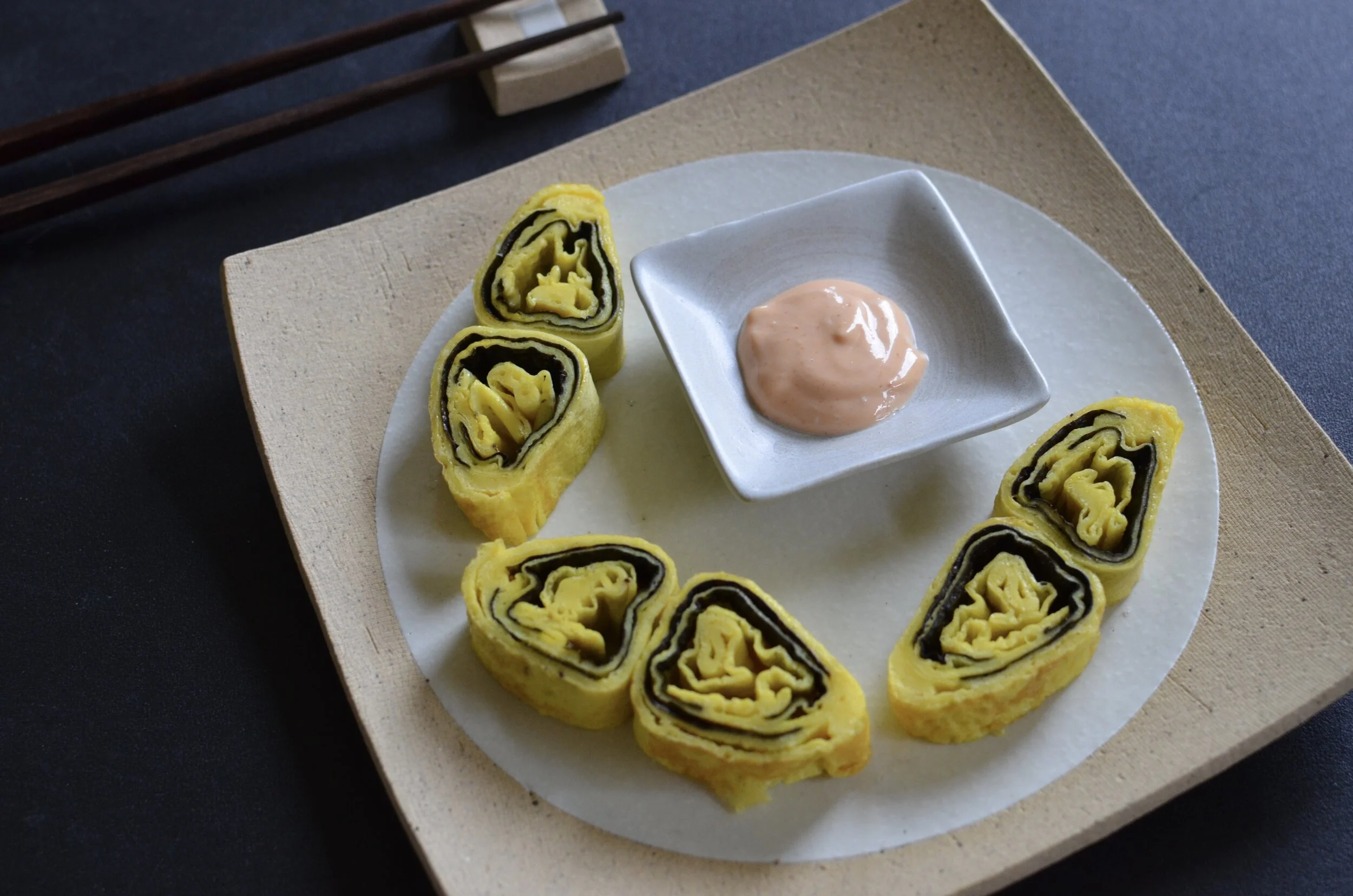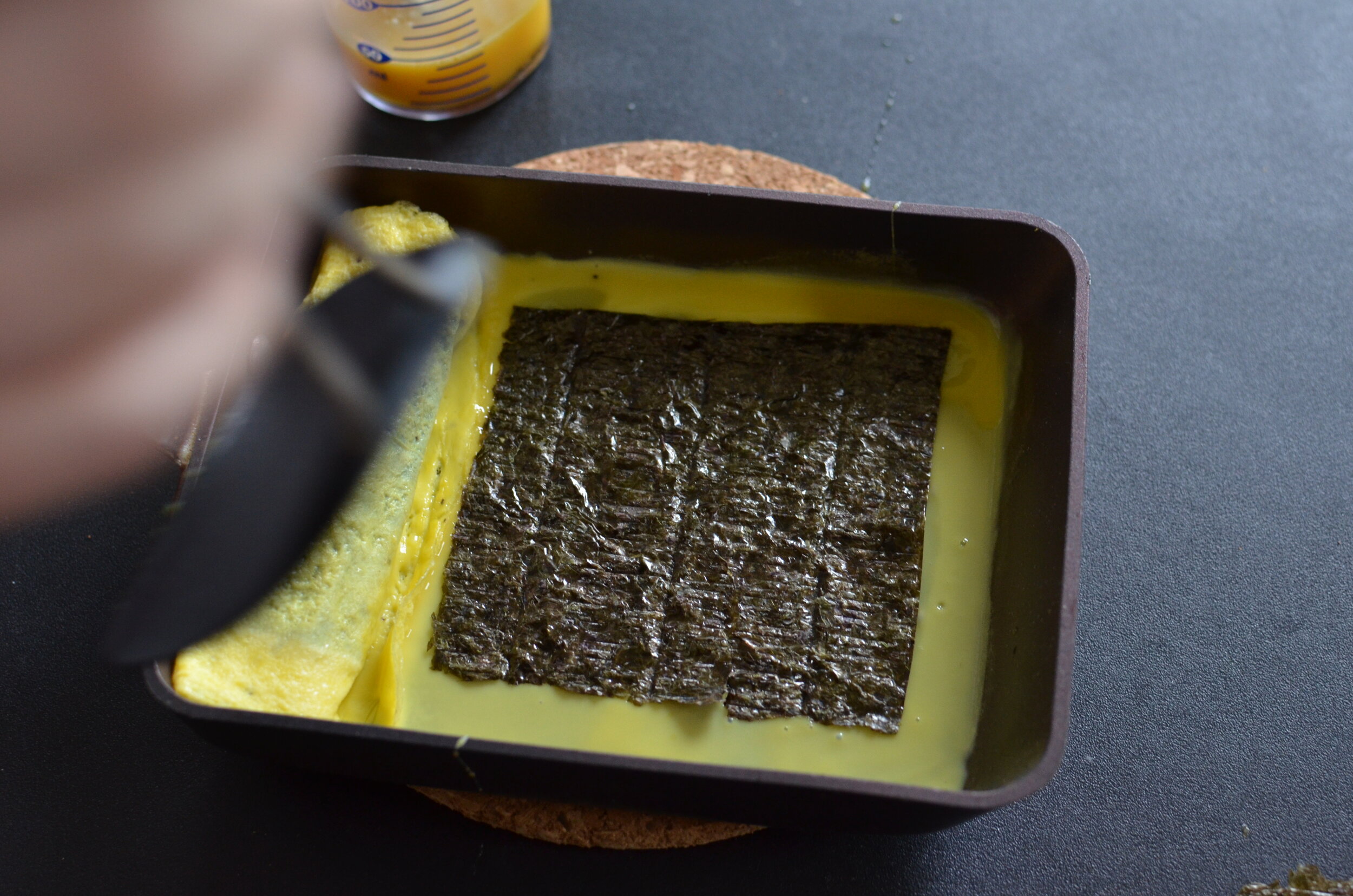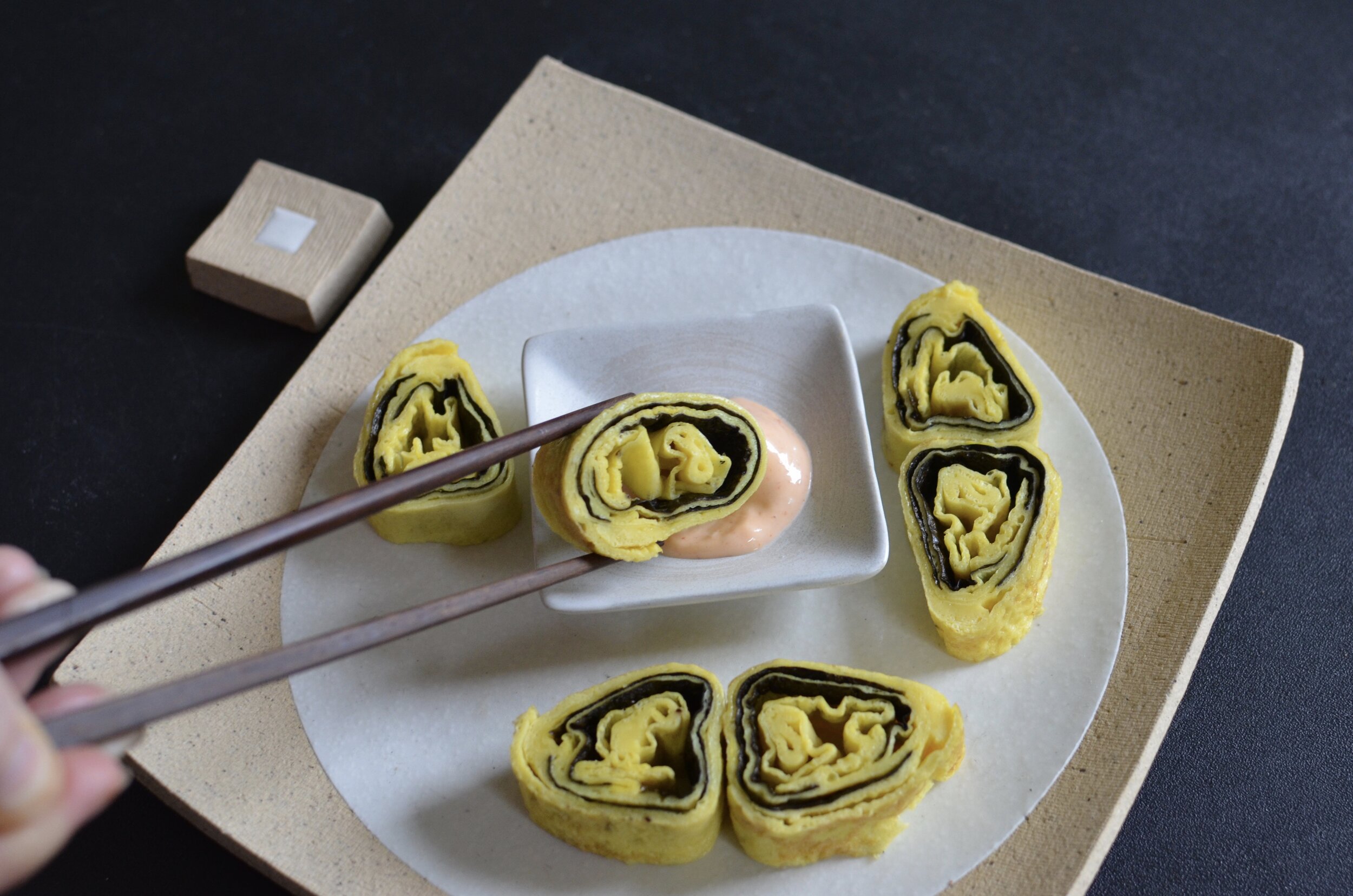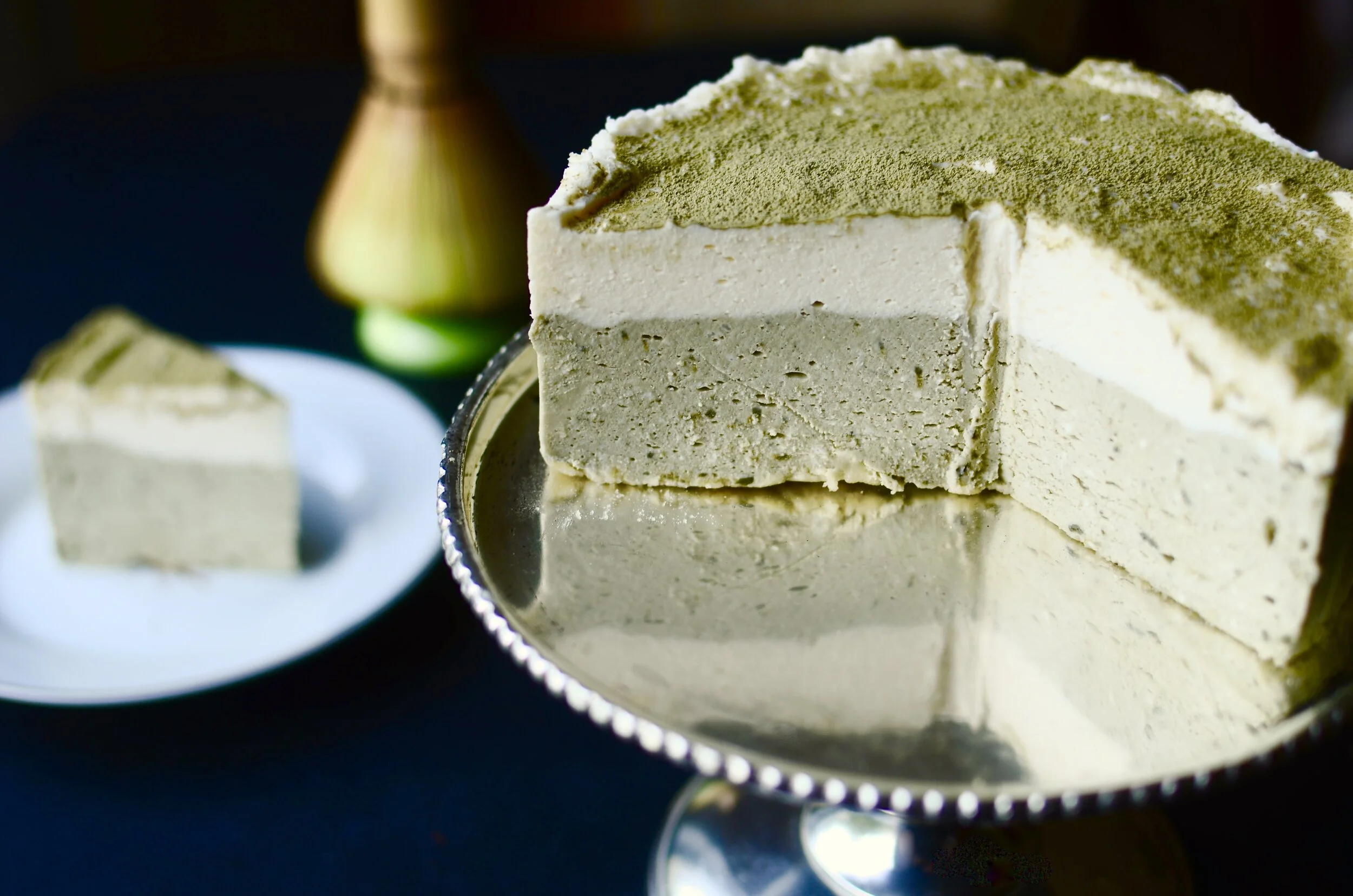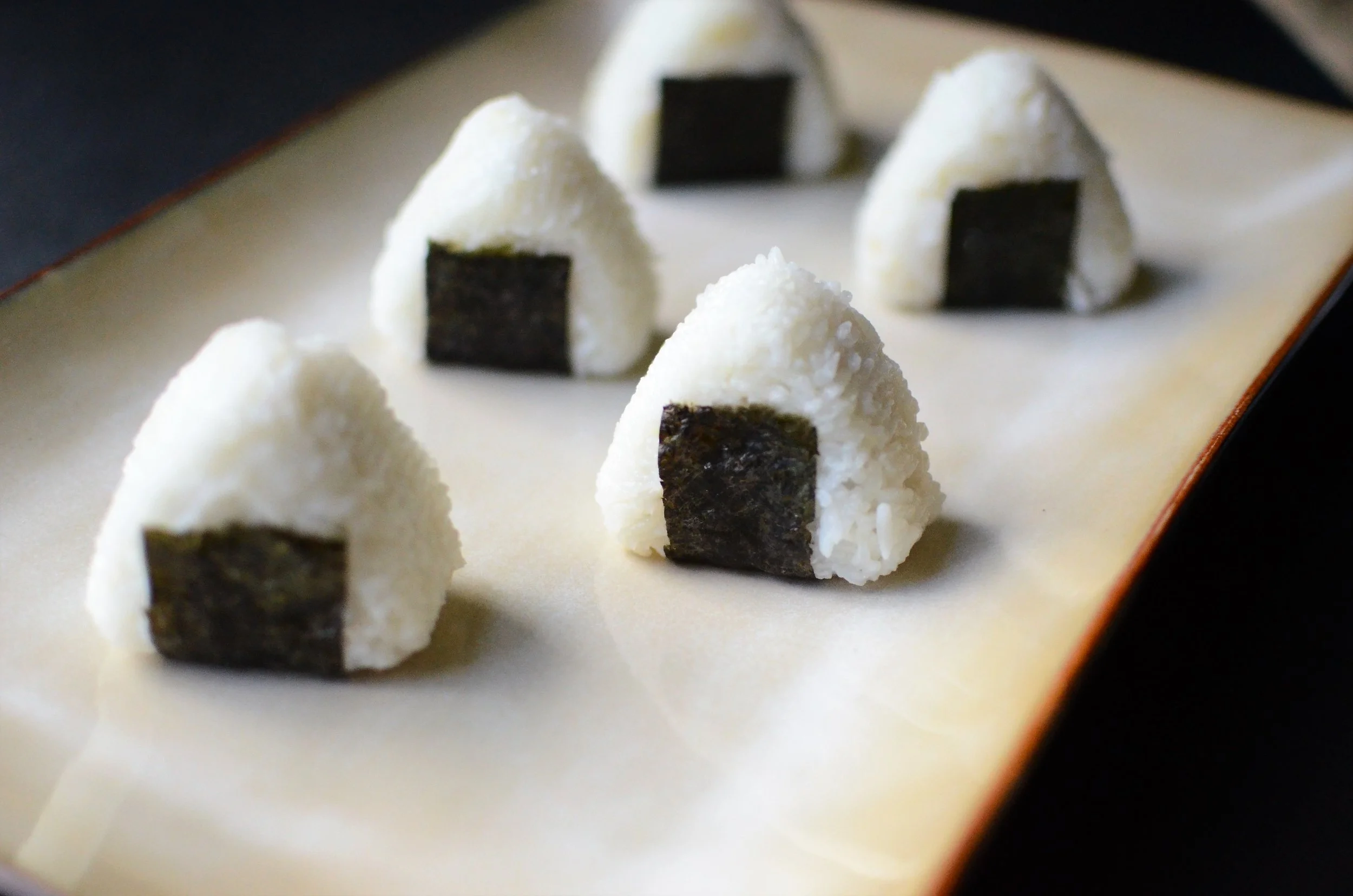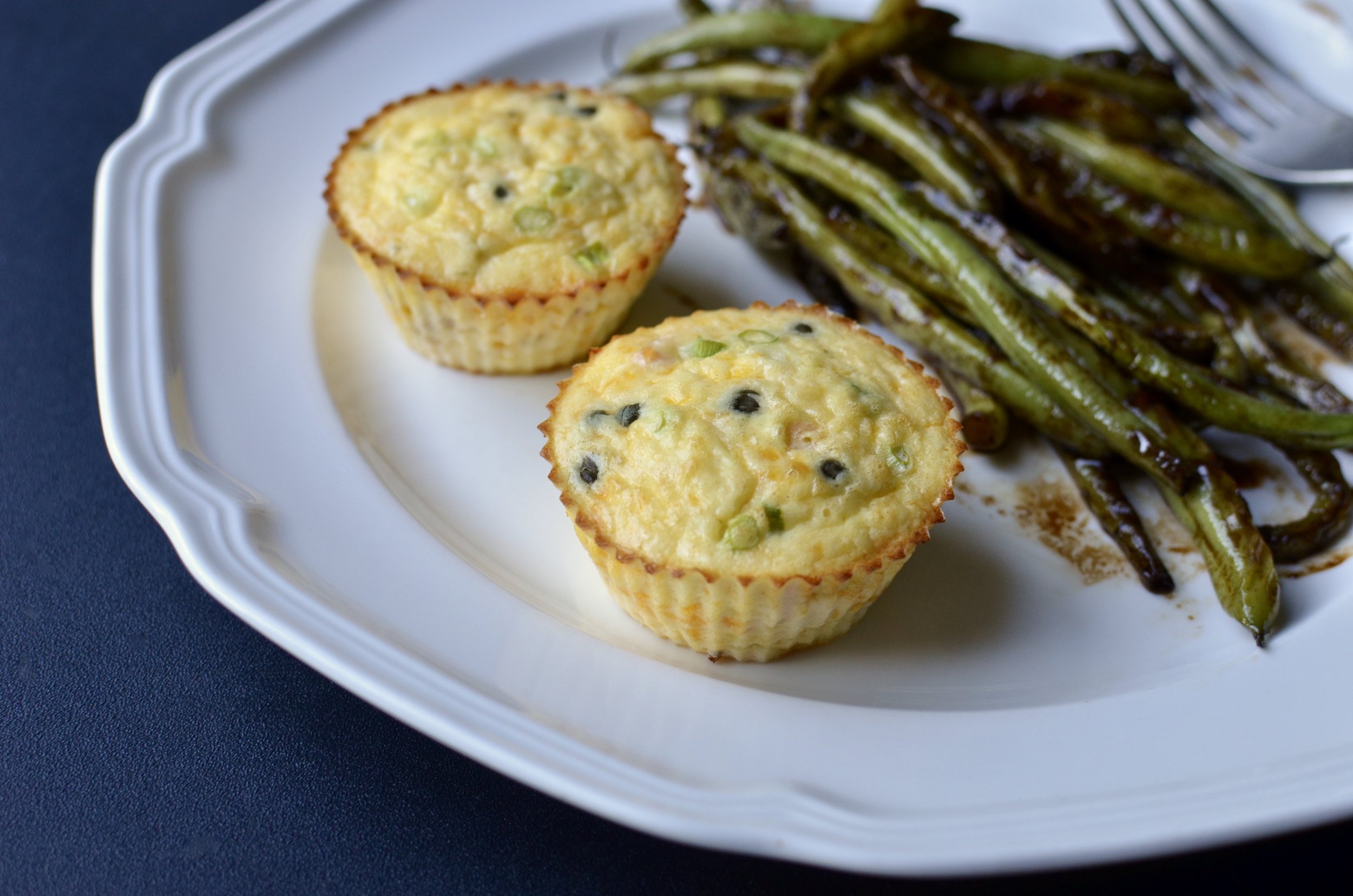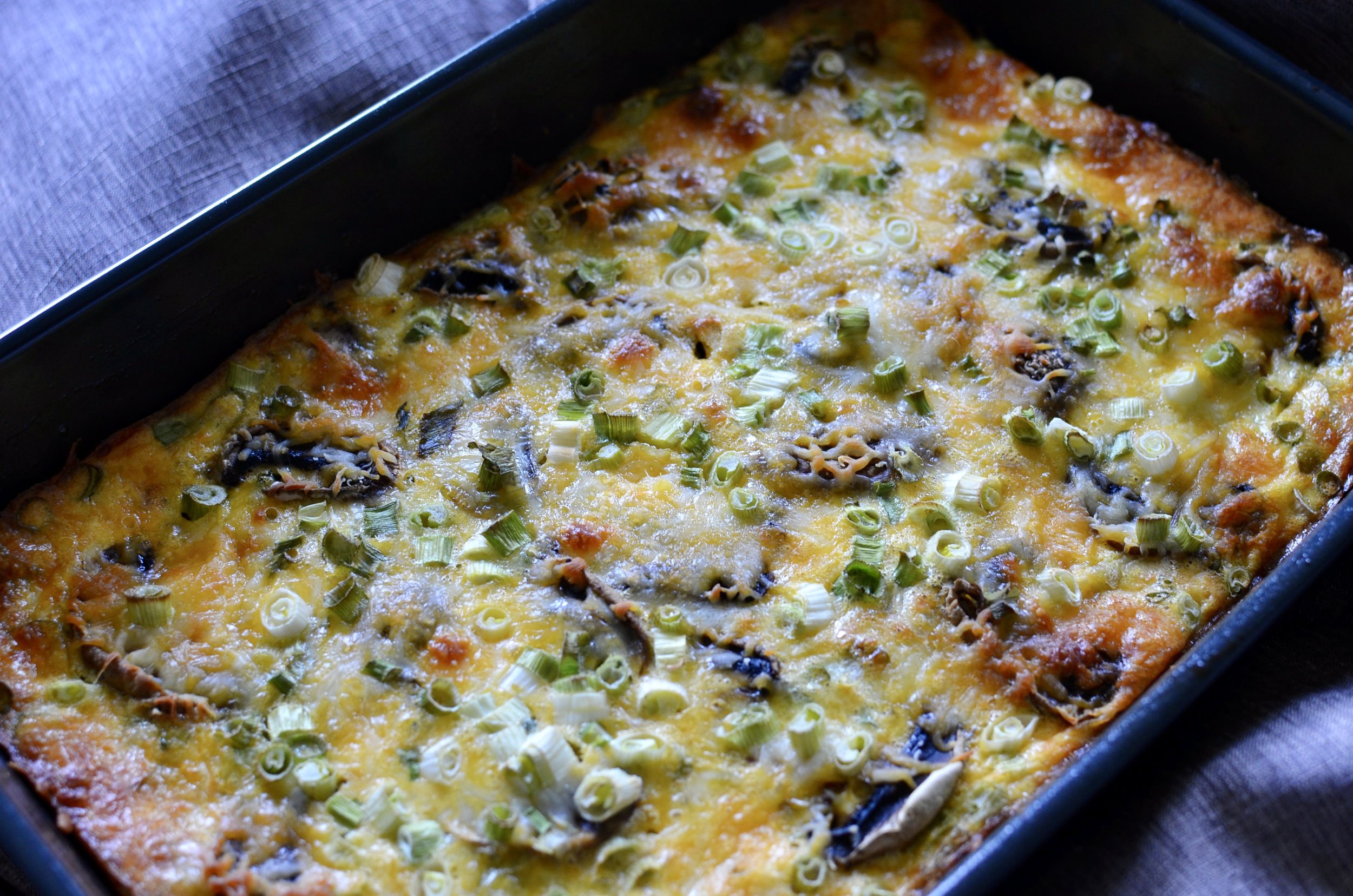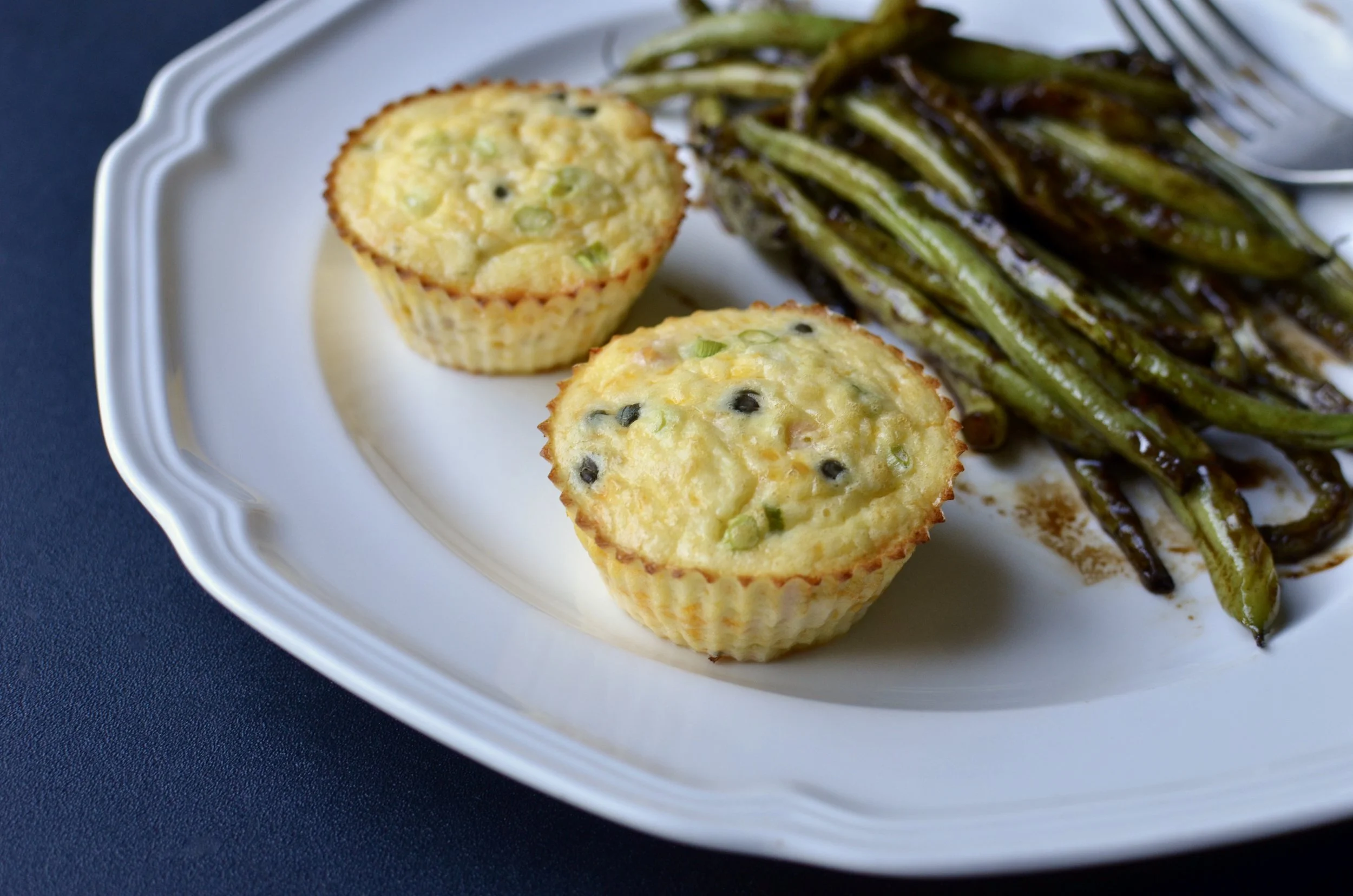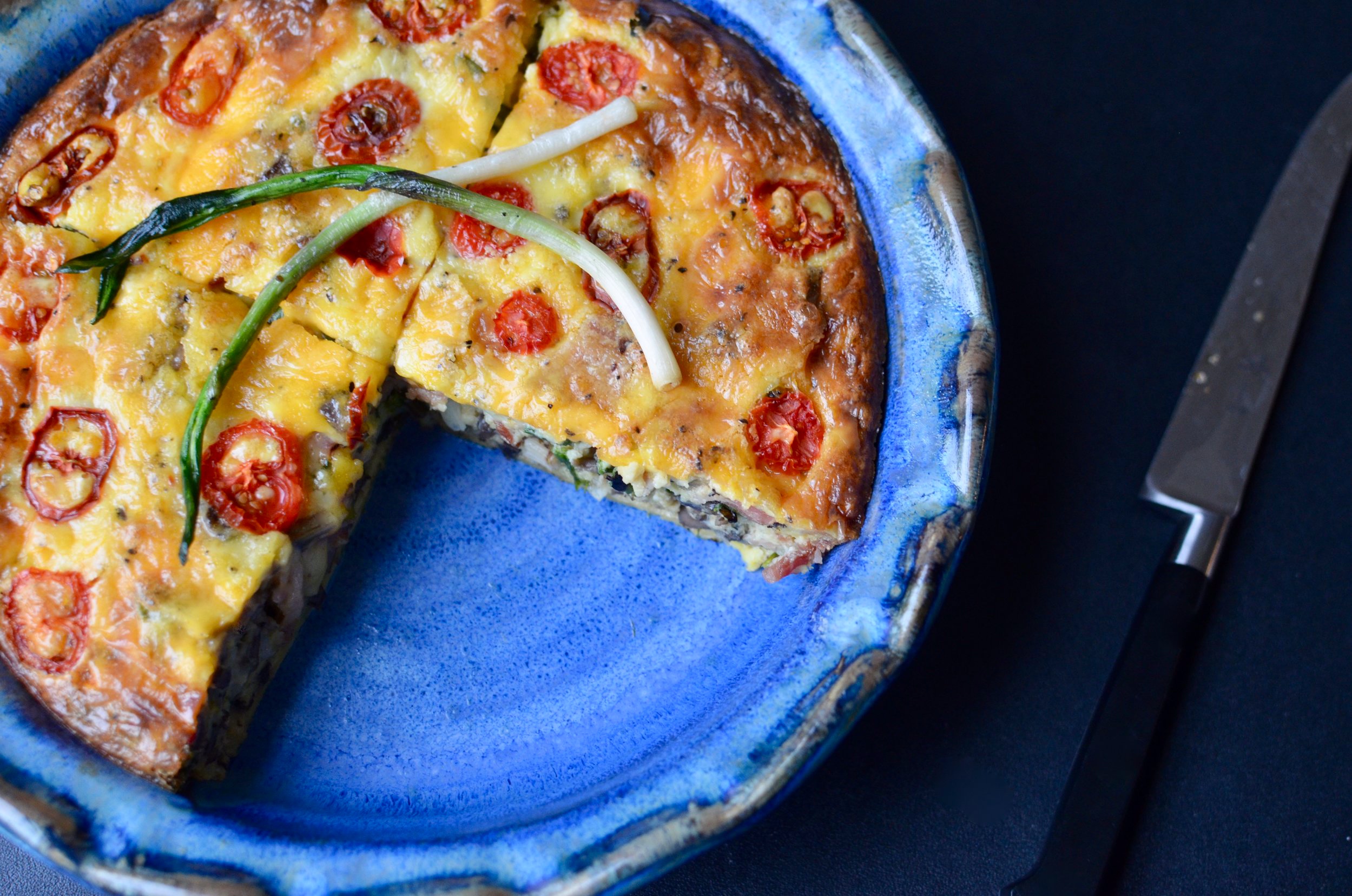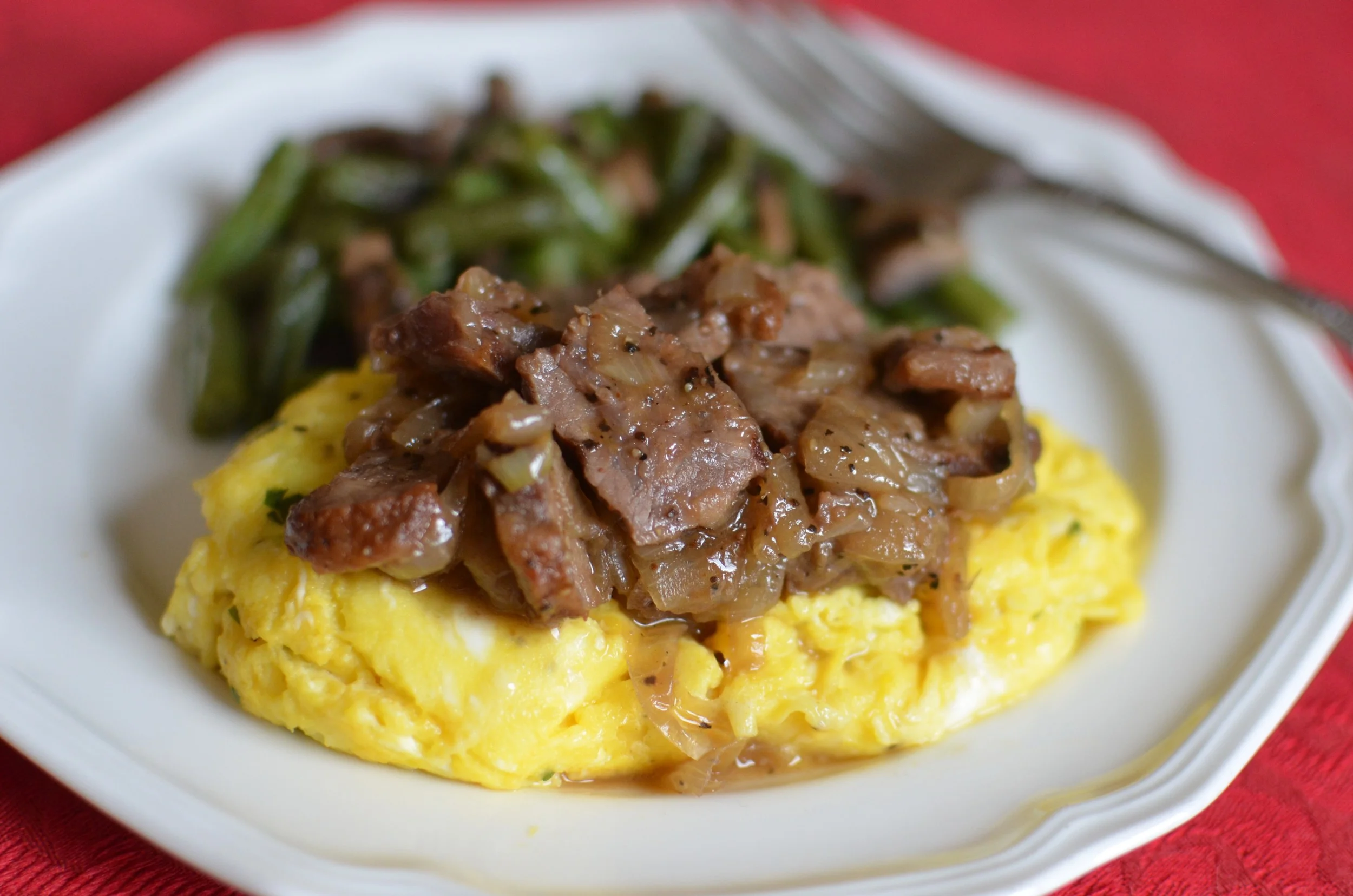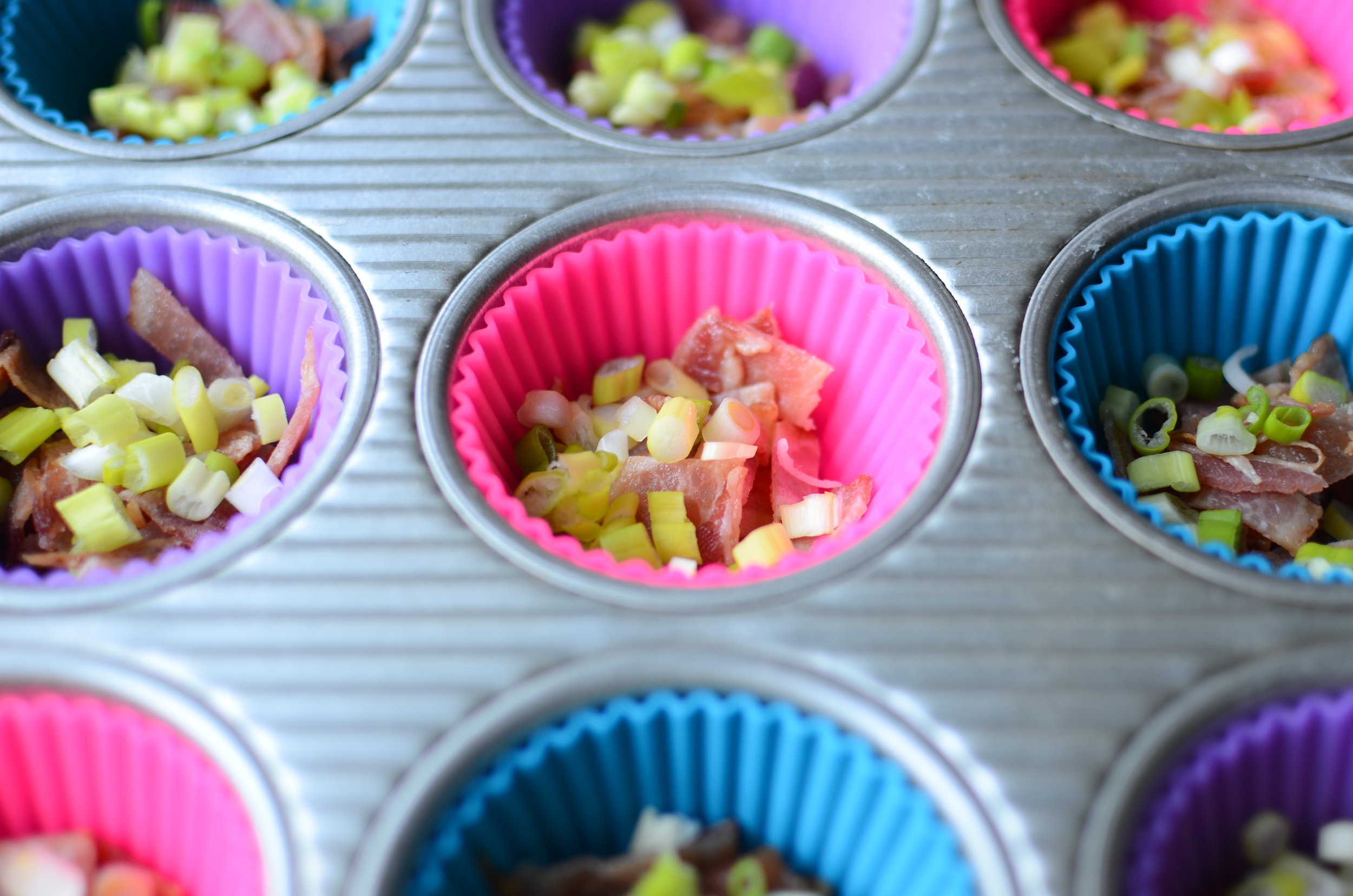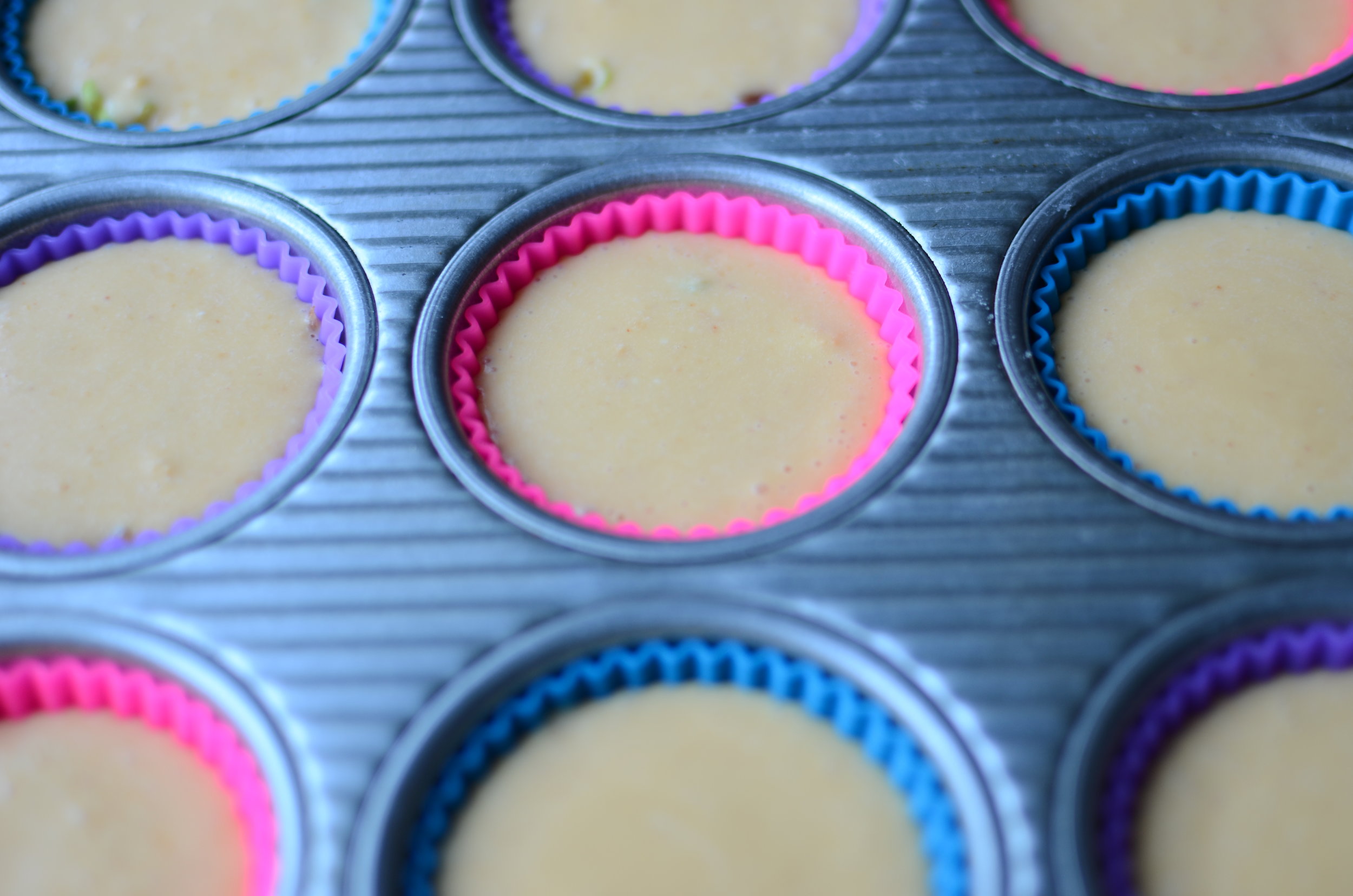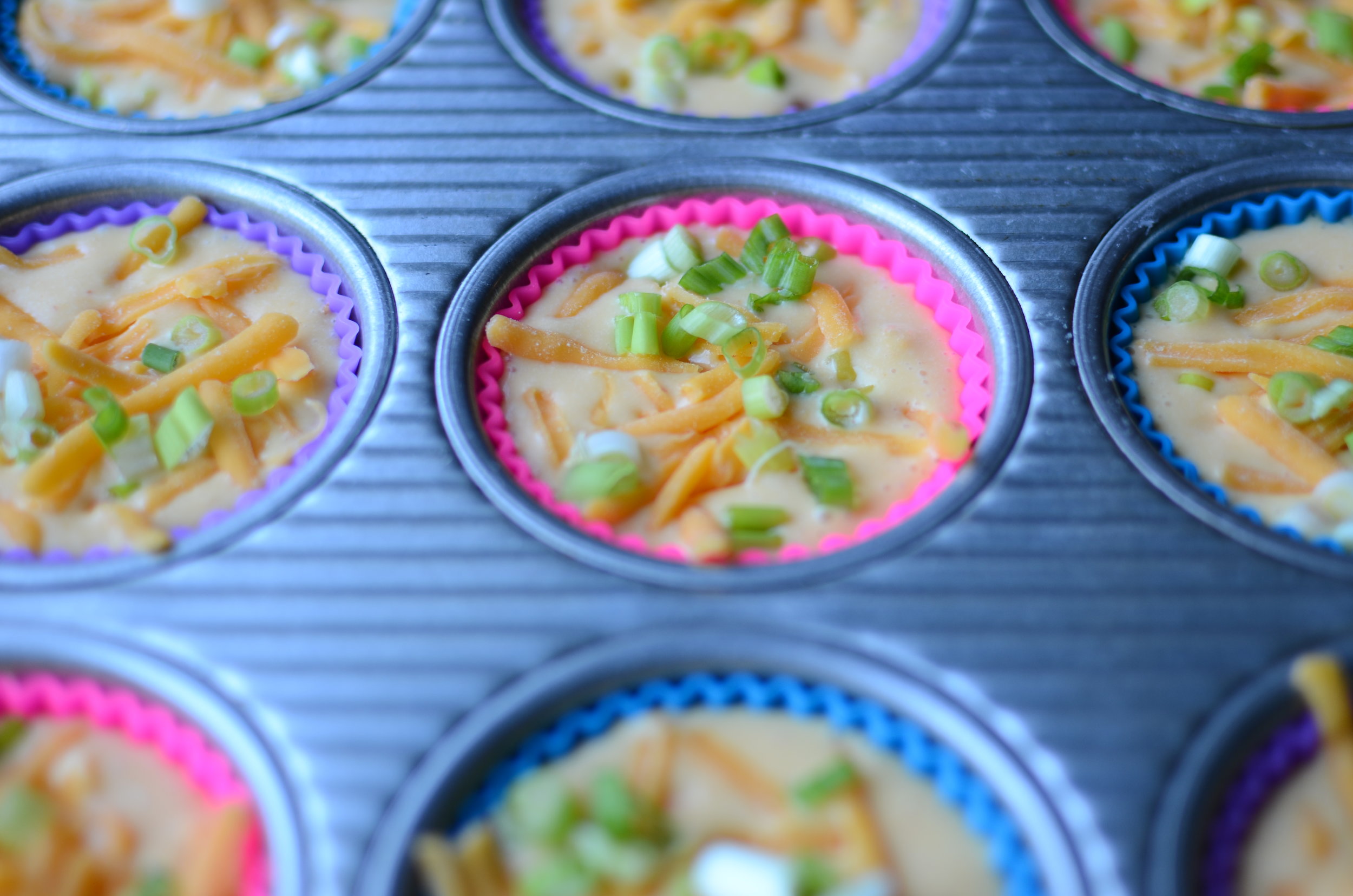Tamagoyaki
Patricia @ ButterYum
One of our daughters studied abroad in Japan and she introduced us to many new foods. Enter Tamagoyaki, a Japanese rolled omelet. Traditionally, the egg mixture is seasoned with soy and mirin for a salty/sweet vibe, but being Americans, we prefer our egg mixture seasoned with just a little salt and pepper. Either way, the technique is the same so let’s head into the kitchen to make some Japanese rolled egg omelets.
The technique is simple. For this demo, I’ll be using beaten egg and nori. Sometimes we also add sliced cheese (definitely not traditional, but very tasty). Also, a tamagoyaki pan helps, but you can certainly use a small round skillet instead.
For this rectangular tamagoyaki pan, pour about 1/4 of the beaten egg mixture into the pan and swirl it around until the bottom of the pan is completely covered. Cook over medium heat until the layer of beaten egg is set, then use chopsticks (or a spatula) to roll the omelet up.
Slide the rolled egg to one side and add another 1/4 of beaten egg, being sure the beaten egg touches the already rolled egg.
If desired, add a quarter sheet of nori (and if you like things cheesy, place a slice of white American or Muenster cheese under the nori).
When the 2nd layer of egg is set, roll again.
Slide the rolled egg to one side and prepare for the next layer….
1/4 egg mixture followed by another 1/4 sheet of nori (and cheese if using).
Since the nori is visible through the egg layers, we don’t add any nori for the last of layer of beaten egg.
Pretty. Transfer the rolled omelet to a cutting board and cut into slices like sushi.
To serve, we like to make a dipping sauce of Japanese mayo and Sriracha. If I have any, a sprinkling of chopped scallions or chives are also good. Enjoy!
Items used to make this recipe:
(affiliate links)
tamagoyaki pan https://amzn.to/3d5h2qt
nori (sushi wrappers) https://amzn.to/2KNOSEh
chopsticks https://amzn.to/2xnAYWi
Japanese mayo https://amzn.to/2YndyeX
Sriracha https://amzn.to/35n6joH
Tamagoyaki
makes 1 rolled omelet
Ingredients
2 large eggs
1/2 sheet nori sushi wrapper, broken into 2 squares
salt and pepper to taste
(optional) sliced cheese, Japanese mayonnaise, Sriracha, sliced scallions or chives
Directions
Beat 2 eggs and add salt and pepper to taste.
Heat nonstick tamagoyaki pan over medium heat and pour 1/4 of the beaten egg into an even layer; when set, roll layer from one end to the other.
Add another 1/4 of the egg mixture in an even layer, being sure the new layer touches the previously rolled egg; top with 1/4 sheet of nori.
Continue steps 2 and 3 until all the egg is used.
Place rolled omelet on cutting board and slice into sushi-like pieces; serve with sauce if desiered.
Note
To make the dipping sauce, mix equal parts Japanese mayonnaise and Sriracha.
